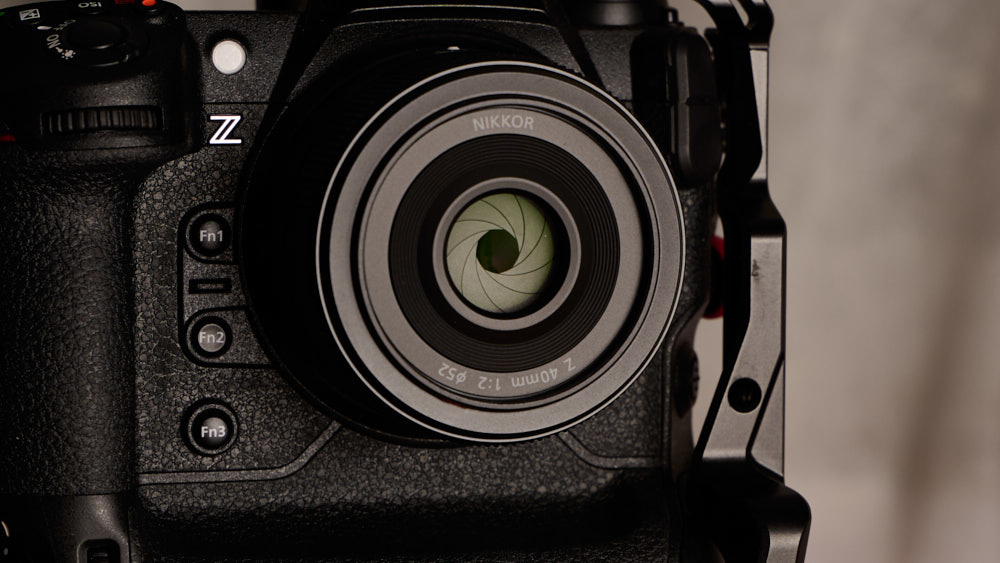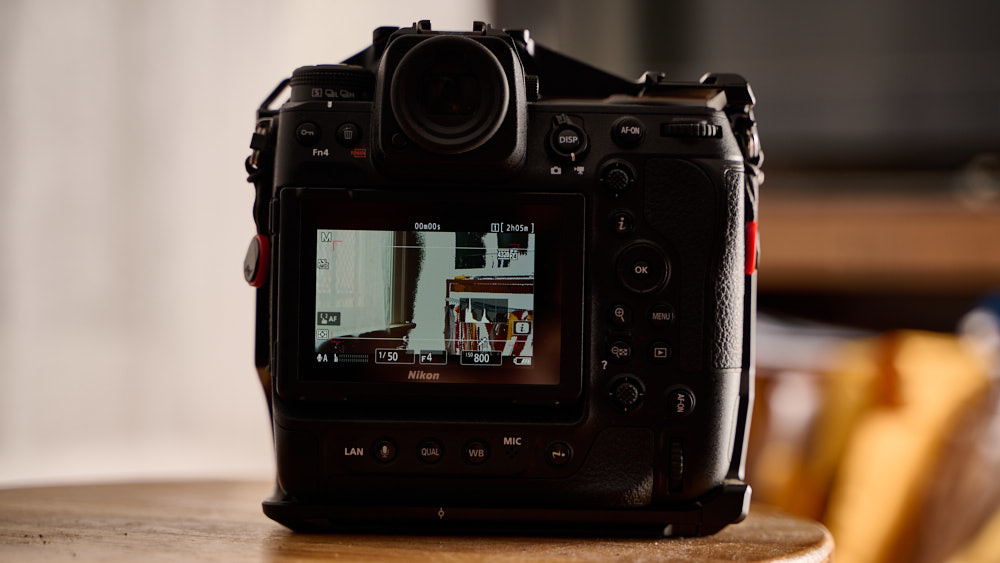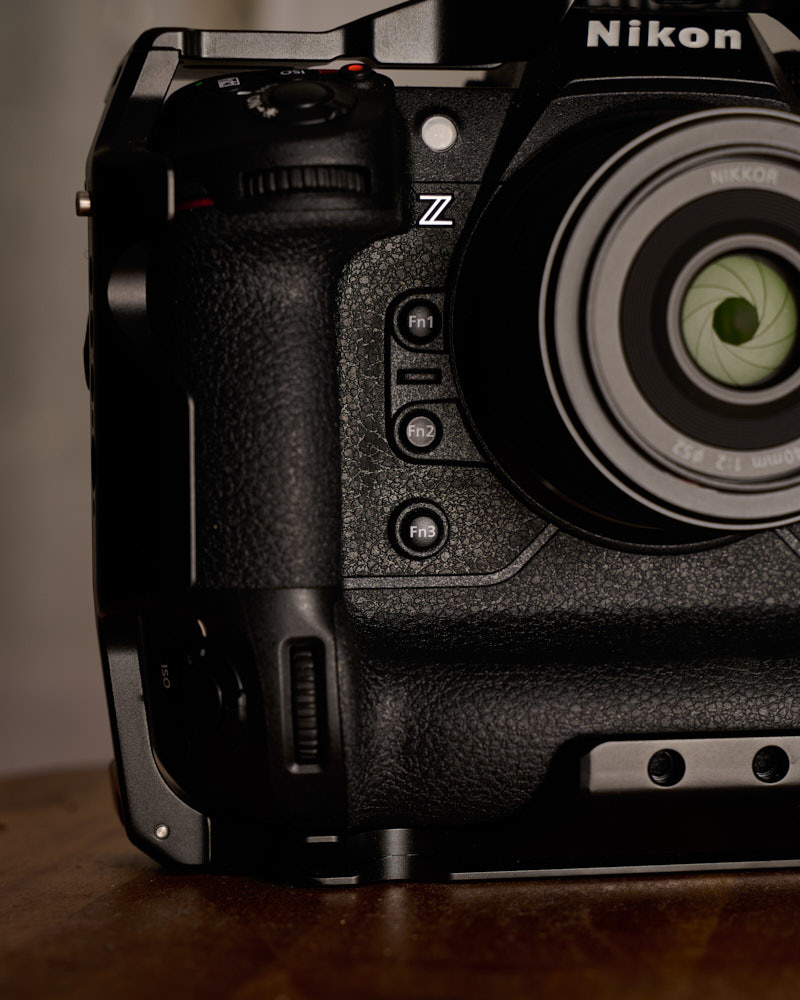The Nikon Z 9 is built for speed. Here are the first customizations I’ve chosen to make mine even faster.
I am an impatient person. Not only do I want things exactly as I want them, but I tend to want them to be that way as quickly as possible and with as little fuss as possible. While this might be a character flaw as a human being, it is nonetheless such a fundamental feature of my personality that I find it unlikely that it will change any time soon. Predictably, this desire to get from point A to point Z as quickly as possible spills over into my work as a photographer and cinematographer. In a craft where there are almost always 1,001 different ways to arrive at the same destination, I will almost invariably choose the most efficient path.
The reason why the Nikon Z 9 is the camera that has finally allowed me to confidently make the switch to mirrorless is not due to headline specs, but rather due to the efficiency. As they say, a camera is a tool. Its only reason for existing is to allow me to turn that creative idea in my head into art in the real world. It’s a necessary part of the process, but it is not the same thing as the artistic process itself. Therefore, what I want my camera to do becomes invisible. I want a camera to perform its task quickly and efficiently while allowing my mind to stay 100% focused on art with minimal regard for technology.

One development that seems to have corresponded with the rise of mirrorless cameras is the sudden importance of custom function buttons. It’s not that these didn’t exist before. It’s just that I never paid much attention to them before my foray into different mirrorless bodies. One would think that my love of efficiency would make me predisposed to a plethora of custom settings. Logically, this makes sense. But, since another defining characteristic of my personality is the apparent complete inability to acquire the finger memory for more than one or two buttons at a time, I’ve never spent a lot of time setting them up. After all, I am the type of person who hasn't played video games since the Nintendo days with the two-button controller. Once video games progressed to these new-fangled controllers with 48 buttons on each side, I was pretty much out of the game. An excess of customization buttons on a camera for me yields much the same result. No point in setting things up I won’t be able to remember.
But, like most things concerning the Z 9, I seem to have found the customization process far easier to remember and far quicker to implement than in prior cameras. So, while it has taken me more effort than a normal human being to be able to remember which custom button does what function, I seem to have arrived at a system for shooting that has allowed me to make an already speedy camera even faster in operation.
Naturally, what you choose to customize will depend heavily on what you're shooting and your personal preferences. But here are a handful of options that have added even more punch to my fuel injector.

Shooting Menu Banks
A lot of cameras, including the previous Z cameras, have custom shooting modes that can memorize various settings. But, the Z 9 takes it up a level by taking it back to a function many users of the higher-end Nikon cameras will be used to with their DSLRs: the shooting menu banks.
Essentially, these are just preset that allows you to pre-program your camera to be set up just how you like it with the turn of a knob. You can have it memorize menu items and pretty much anything else you consider your go-to moves which will help you quickly change between shooting situations without fear of having forgotten one or two settings along the way. The Z 9 offers four shooting banks which can all be programmed completely independently. I have my four banks set up for common situations. The first is for general daytime walkabout photography. The second is set up for flash photography. The third is for low-light interiors or night photography. And the fourth is for Auto ISO and what I call dummy mode (that's just what I call it and hopefully not an indication of my choice to use it), which is what I turn to when I need to grab a shot fast and don’t have the time to dial in settings manually. I have my Fn2 button set to pull up the shooting menu banks option, which I can then scroll through with the back dial.
These four would be awesome enough, but because the Z 9 is also one of the best video cameras on the market, I find myself shooting motion with it just as often as stills. Well, the good news is that you can have four completely different video menu banks set up in the camera as well. So ultimately, you are ending up with eight cameras all in one, the four still cameras previously mentioned, plus four more video cameras. I have my video shooting menu banks set up for 10-bit 8K 24p and 4K 60p at ISO 800 (until 8K 60p comes with the firmware update). Then, I have the third video bank set up for low-light video with a higher ISO. Then, just like stills, the last mode is my Auto ISO dummy mode, where I let the camera make the exposure adjustments for me by automatically adjusting ISO while keeping my frame rate and aperture constant.
One thing to keep in mind when setting up your menu banks is that you need to go into the photo shooting menu, and right under where it says “Shooting Menu Bank,” you will see an option for “Extended Menu Banks.” The extended menu banks are what store your exposure settings. Seems to me this should be on by default instead of off. But, Nikon makes you activate that setting. So, if it’s your first time using shooting menu banks, you will probably want to flip that on so that your favorite exposure settings travel along with your choice of bank.

Zebras
While I prefer to keep my custom buttons consistent between still and motion, just so that it’s easier to remember, my Fn1 button has a split personality. In video mode, my Fn1 button serves to toggle zebras on and off. If you’ve never used zebras, they are essentially a visual representation of your exposure values in the video. You preset them to your desired IRE level to indicate when a target is exposed at a designated level. When it hits that level, you’ll get a zebra pattern over the target in your viewfinder. This can be helpful in multiple ways. I have zebra patterns set up for both highlight and mid-tone areas. Pretty much the only hard and fast rule to exposing video in the digital world is to never blow your highlights. You might be able to recover shadows. But once highlights are gone in the digital world, they are often gone for good. So, I set my highlight zebra to ensure that anything above a certain IRE shows me a zebra pattern. I set that level way below the level of clipping. That way, I know before shooting that, at a minimum, I haven’t blown any highlights. You can also gauge this from the histogram, but I find the zebras to be a double confirmation.
But, what about your midtones? If your scene often involves a human subject as do mine, I find that setting midtone zebras can also be helpful. So, I set my midtone range to the IRE level where I want my skin tones to fall. Just like the highlight zebras that turn on when I’m in danger of clipping, the midtone zebras will turn on when my subject's skin tones fall within my desired range. The camera doesn’t display highlight and midtone zebras simultaneously (at least I haven’t figured out how to do this), but I have my Fn1 button set to toggle between highlight zebras, mid-tones zebras, or no zebras at all. This helps me quickly nail down exposure in video and ensure that I have something to work with in post.

AF Area Mode + AF ON
In still photography, I have my Fn1 button set for a different function. Generally speaking, the Auto Area AF with Auto Subject Detection is going to handle 95% of the shooting situations that I find myself in. Most of my images feature human subjects as the main point of interest, and the camera will do an amazing job of identifying and sticking to my subjects. But, now and then, I need to override the camera's hunch to focus on something else in the frame.
The dedicated AF mode button on the left side of the camera allows you to quickly change modes. But the Z 9 brought back one of my favorite options from the DSLR days which allows me to set function buttons to not only change the focus mode but also activate the autofocus. S,o I can leave my camera in Auto Area AF with Auto Subject Detection, then instantly switch modes and activate autofocus by pressing a single button. I have my Fn1 button when shooting stills, set to automatically trigger single point AF. So, if I’m shooting a single rock through a thicket of leaves, for example, I can pinpoint that rock instantly without having to officially change my menu settings. Why would I want to photograph that single rock? That, I have no idea. But I can. And that’s cool.
Just in case, I also have my thumb selector set up so that I can push it in and automatically trigger 3D tracking. And I have the L-Fn button on my lens set up to automatically trigger Wide-Area AF. So, I essentially have access to four different focus modes at all times simply based on which button I push.

Focus Peaking
While autofocus is all the rage in still photography, when it comes to cinematography, manual focus is a necessity. What you choose to focus on tells your story. So, while you can let the camera decide, you are quite often going to want to assume complete control over the situation. This is where focus peaking comes into play.
Focus peaking essentially highlights the area of the frame that is in focus. You can choose from a selection of different colors or intensities, but the idea is to give you a fast visual representation of your focus point when using manual focus. I have mine set to blue and the highest level of intensity. So, when I rack focus from one subject to another, all I have to do is watch the little blue pattern travel from one face to the next to make sure that I am in focus.
Since I am pretty much blind as a bat and don’t trust my eyes at all when it comes to critical focus, this additional point of confirmation is key for me when I am operating the camera. So, I have my Fn3 button set to toggle focus peaking on and off. Just before the take, I will manually focus to the best of my ability and eyesight. Then, I will flip on focus peaking for confirmation. I will then usually flip it off to not distract me during shooting unless there is a rack or constant movement that I need to track during a scene.

My Menu
The Fn4 button assignment requires less explanation. I simply have it set to take me straight to My Menu. The menu button on the bottom right will take me to the last menu item I’ve looked at. The Fn4 button will take me to the My Menu page where I have put pretty much every setting that I use. As I mentioned earlier, I’m not super great at remembering all my customizations or where each and everything is on the menu. So, to keep things simple, I put all the things that I change on even a semi-regular basis onto My Menu. Then, I know that even if I forget where a setting is a while on set, I can always quickly jump into My Menu and find it there in a pinch.
These are just examples of how I have my custom function buttons set up on the Z 9. These reflect my priorities, shooting habits, and ability/lack of ability to remember certain settings. But each photographer will be different and what works for me might not work for you. So, how have you set your camera up to maximize your speed in the field?






